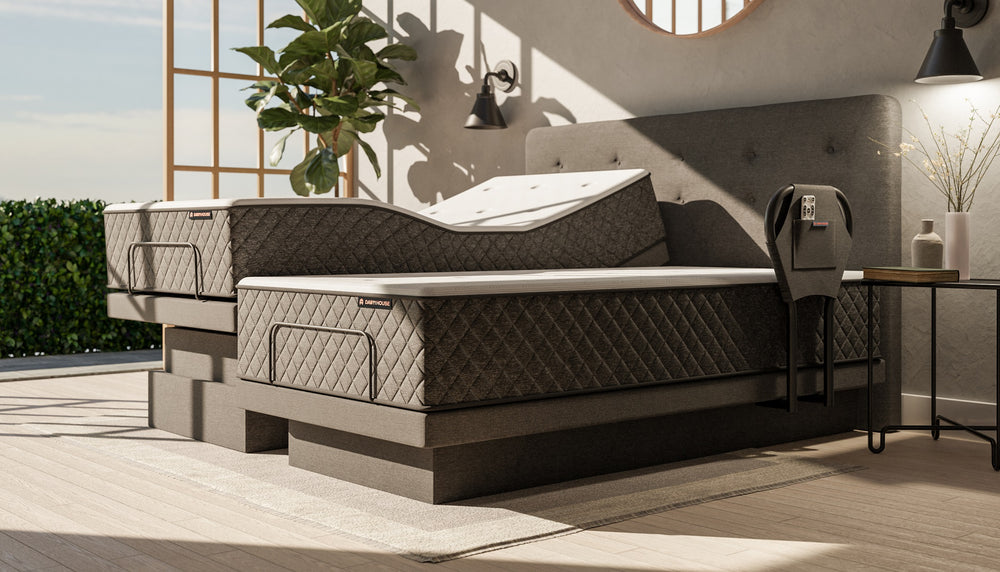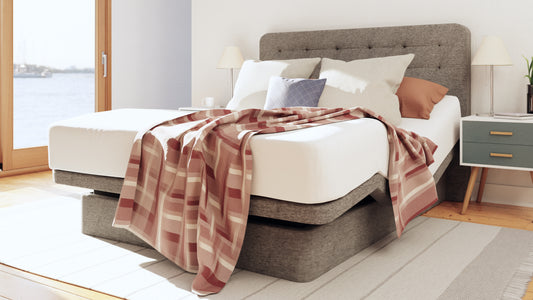If you’re setting up a hospital bed in your home, you might be wondering—can hospital beds go upstairs? The short answer is yes, but moving a hospital bed upstairs requires careful planning to make sure it’s safe and effective.
Whether you need the bed for home care or recovery, this guide covers five essential tips to help you transport and install a hospital bed upstairs without stress.
1. Find the Hospital Bed Dimensions & Weight
Before moving a hospital bed upstairs, it’s important to know its size and weight. Hospital beds come in different styles, including compact models designed for home use and larger, fully electric options. Some beds also include attachments like side rails, headboards, and footboards, which can add to their overall dimensions.
Why Size and Weight Matter
-
Dimensions: Standard hospital beds are about 36 inches wide and 80 inches long, but bariatric beds can be wider and longer.
-
Weight: Basic models may weigh 150–200 pounds, while more advanced electric beds can weigh over 400 pounds.
Knowing the hospital bed dimensions helps you determine if it can fit through doorways, hallways, and staircases without disassembly.
How to Check Dimensions
-
Look up the specifications online or in the product manual.
-
Measure the bed frame, mattress, and any attachments like rails or headboards.
-
Don’t forget to factor in the height, especially if the bed can’t be fully collapsed.
If the bed seems too large or heavy, you might need to disassemble it or look into compact hospital beds for home use.
2. Learn How to Disassemble Hospital Beds
Disassembling a hospital bed can make it much easier to move upstairs. Many beds are designed to break down into smaller parts, which simplifies transport and reduces the risk of damage. It also allows you to navigate tight corners, narrow staircases, and doorways more easily without causing scratches or dents.
Steps to Disassemble Hospital Beds
-
Unplug Electronics: Disconnect any power cords and batteries from electric models.
-
Remove Attachments: Take off side rails, headboards, and footboards.
-
Separate the Frame: If the frame can be taken apart, detach it into smaller sections.
-
Label Parts: Use labels or tape to mark each part so reassembly is easier.
Safety Tips
-
Always follow the manufacturer’s instructions when disassembling hospital beds.
-
Store small screws and bolts in a bag to avoid losing them during the move.
If disassembling the bed seems complicated, you may want to hire professional medical equipment movers to handle the task.
3. Measure Staircase and Hallway Dimensions
Not all staircases and hallways are built the same, and tight spaces can make moving a hospital bed upstairs a challenge. Measuring in advance can save time and prevent damage to your walls or the bed. It also helps you identify whether any obstacles, such as low ceilings or sharp turns, will require special tools or adjustments to complete the move safely.
Key Measurements to Take
-
Staircase Width: Measure the narrowest point, including handrails. Most staircases need to be at least 36 inches wide to fit standard hospital beds.
-
Hallway Width: Check corners and doorways for tight turns.
-
Ceiling Height: For spiral or steep staircases, measure the overhead clearance to avoid bumping the bed.
Tips for Navigating Tight Spaces
-
Use furniture sliders or blankets to protect the bed and walls.
-
Consider using a stairlift or mechanical lift if the bed frame is especially heavy.
When measurements don’t add up, professional movers may need to explore alternate routes, such as bringing parts through windows or balconies.
4. Hire Professional Movers
Hospital beds are heavy, awkward to carry, and sometimes fragile due to their electrical components. That’s why hiring professional medical equipment movers can make the job much safer and easier. They have the expertise and equipment needed to handle delicate parts and ensure the bed is transported without damage.
Benefits of Professional Movers
-
Expert Handling: Movers know how to safely transport and install home care beds.
-
Proper Tools: They use dollies, straps, and ramps to move equipment without damage.
-
Insurance Coverage: Many companies provide insurance in case of accidental damage.
What to Look for in Movers
-
Experience with moving hospital beds or other medical equipment.
-
Positive customer reviews and ratings.
-
Licensing and insurance for added peace of mind.
Hiring experts can save you time and reduce the risk of injury, especially if your staircase or hallway is difficult to navigate.
5. Check Floor Load Capacity
Hospital beds can be heavy, and once set up, they place a significant load on your floor. Before installing one upstairs, it’s critical to confirm the floor can handle the weight. Failing to check the floor's load capacity could lead to structural damage, compromising safety and stability.
Understand Load Capacity
-
Standard Floors: Most residential floors can support 40–50 pounds per square foot.
-
Heavy Beds: Electric and bariatric hospital beds may exceed this limit, especially with a patient and accessories added.
How to Check Your Floor
-
Review building plans if available.
-
Consult a contractor or structural engineer to assess load capacity.
If your floor needs reinforcement, it’s better to address it before installation rather than risk damage or collapse later.
Get a More Comfortable Alternative to a Hospital Bed
While hospital beds offer practical benefits for medical care, they’re not always the most comfortable or visually appealing option for home use. Their bulky frames and clinical designs can feel out of place in a home setting, especially if you want a space that feels warm and inviting. Fortunately, there are more stylish and versatile alternatives, like The Dawn House Bed, that combine functionality with modern comfort.
Why Choose Adjustable Beds?
Adjustable beds provide many of the same benefits as hospital beds, such as customizable head and foot positioning, but they’re designed with home use in mind. Here’s why they make an great alternative:
-
Comfort Features: Adjustable beds allow you to elevate your head, legs, or both, making them ideal for improving circulation, reducing swelling, and relieving back pain—just like a hospital bed. Many models even include massage settings and built-in USB ports for added convenience.
-
Modern Design: Unlike hospital beds, adjustable beds are designed to look like traditional furniture, so they blend seamlessly with your bedroom decor. They provide a homier feel without sacrificing functionality.
-
Easy Installation: Most adjustable beds are lightweight, compact, and easy to assemble, so you won’t have to worry about complicated disassembly or tight staircases. This makes them a great option for upstairs bedrooms or rooms with limited space.
-
Versatility: Adjustable beds are not only useful for medical needs but also for everyday comfort. Whether you’re reading, watching TV, or sleeping, you can adjust the position to suit your needs.
-
Cost-Effective Solution: Compared to hospital beds, adjustable beds are often more affordable, especially when you factor in their long-term use beyond recovery.
Is an Adjustable Bed Right for You?
If you or a loved one needs extra support but wants to maintain the feel of a traditional bedroom, an adjustable bed might be the perfect fit. It offers the medical functionality you need without compromising on comfort or aesthetics.
For more tips on creating a relaxing and supportive sleeping space, check out our guide: 5 Ways to Make a Hospital Bed More Comfortable.
Final Thoughts
Moving hospital beds upstairs isn’t impossible, but it does require careful planning. Start by checking hospital bed dimensions, learning how to disassemble parts, and measuring tight spaces. Hiring professional movers and confirming your floor’s load capacity can make the process even smoother.
If a hospital bed feels too bulky for your home, consider switching to an adjustable bed. Not only are they easier to set up, but they also provide comfort and style that traditional hospital beds can’t match. With the right preparation, you can create a safe and comfortable home care environment that works for everyone.



